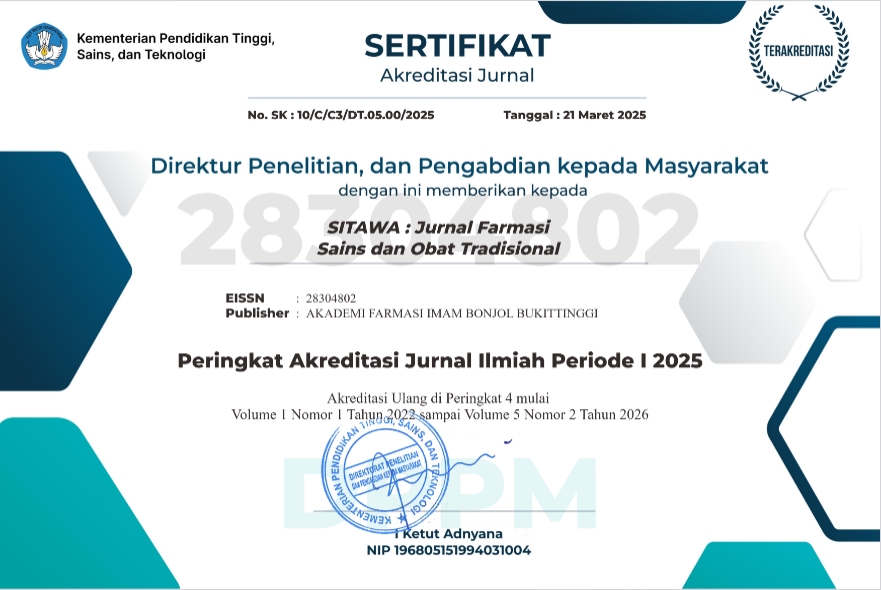EFFECT OF EXTRACTION METHOD ON DETERMINING TOTAL PHENOL CONTENT OF ROSEMARY EXTRACT
DOI:
https://doi.org/10.62018/sitawa.v4i1.120Keywords:
Total Phenol Content, Rosemary, Ethanol Extract 80%Abstract
Rosemary is a unique herb that is commercially available for use as an antioxidant. On the other hand, it can also be used as a food preservative, as it prevents oxidation and microbial contamination. Therefore, rosemary can be useful for replacing or even reducing synthetic antioxidants in food. Antioxidants are compounds that can inhibit oxidation reactions, by binding free radicals and molecules very effectively. As a result, cell damage will be inhibited. Known sources of antioxidants can be synthetic antioxidants and natural antioxidants originating from compounds contained in plants, one of which is phenolic compounds. To obtain phenolic compounds, extraction is carried out using maceration and digestion methods. The solvent choice here uses 80% ethanol solvent. The results obtained in this study were that 80% ethanol extract of rosemary was extracted using the maceration method, with a total phenol content of 11.84 mg GAE/g extract, while using digestion the total phenol content was 9.61 mg GAE/g extract. It can be concluded that the extraction method can influence the results of total phenol content with a significant difference with a p value <0.05
Downloads
Downloads
Published
How to Cite
Issue
Section
License
Copyright (c) 2025 Mercyska Mercyska Suryandari, Andhika Dwi Aristyawan, Ali Wefa, I Made Ngurah Rio Juliana

This work is licensed under a Creative Commons Attribution 4.0 International License.













